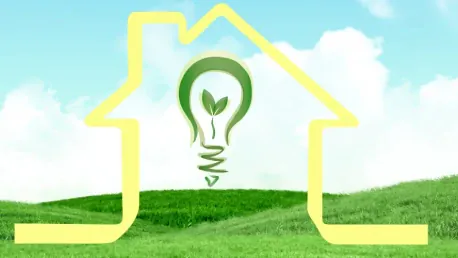A recent survey conducted by Schneider Electric, a leader in energy management and automation, sheds light on a critical issue: the gap between homeowners’ awareness of energy efficiency and their actual practices. The survey, titled “Evolving Home Energy Consumption: Intentions, Actions, and Hurdles to Greater Home Energy Efficiency,” explores the attitudes, behaviors, and barriers homeowners face regarding energy efficiency and sustainability. Sampling 13,000 people from 11 different countries, including 1,000 respondents from India, the survey reveals key insights into the disparity between homeowners’ awareness of energy efficiency and the steps they are willing to take to achieve it.
An interesting aspect of the survey is the primary theme, highlighting a significant gap between homeowners’ intentions to reduce their carbon footprint and the actions they actually take. A substantial majority (70%) of respondents recognize the importance of reducing their carbon footprint. Still, many are engaged in small-scale, less effective energy-saving methods. This discrepancy indicates a lack of impactful energy-saving measures in many households, despite the expressed desire to be more energy-efficient.
The Gap Between Awareness and Action
The survey reveals that while awareness of energy consumption is high, driven by rising energy costs and climate change impacts, there is a notable lack of impactful energy-saving actions among households. The most common practice is turning off lights, which accounts for a mere 5% of average energy bills. Conversely, only 44% of homeowners reported making adjustments to their ambient temperature, a measure that directly impacts over half of household energy usage. Despite the high awareness levels, effective energy-saving strategies remain underutilized by a large percentage of the population.
A total of 82% of respondents consider energy efficiency somewhat important or very important, demonstrating the general consensus on its relevance. Additionally, 84% indicated that it is the top desired home improvement, emphasizing the strong interest in energy efficiency. However, the most effective measures, such as adjusting ambient temperatures, remain significantly underused. This finding highlights the discrepancy between awareness and actions taken, indicating a pressing need for better education and practical steps that can help bridge this gap.
Misconceptions About Energy-Saving Methods
Another key insight from the report is the overemphasis on lighting as an energy-saving measure. Approximately 58% of homeowners regularly turn off lights to save energy. While this practice is commendable, it is relatively ineffective compared to other strategies. Similarly, unplugging unused chargers is another popular method, despite its minimal impact of saving only $0.26 per charger annually. These findings suggest that there are widespread misconceptions about which actions significantly affect energy consumption.
The report also examines the adoption and perception of smart home technology and artificial intelligence (AI). It points out that consumers disproportionately believe that smart lighting is a major contributor to enhancing energy efficiency. Close to 24% of respondents own smart lighting, yet only 21% have a smart thermostat—a device that could potentially reduce annual energy bills by up to 30%. Alarmingly, nearly half (46%) of respondents are unaware of the energy-saving benefits of smart thermostats, underlining a significant knowledge gap that needs to be addressed.
The Role of Smart Home Technology and AI
The survey also explores perceptions of AI in household tasks, revealing fascinating trends. Despite predictions that AI could help reduce global greenhouse gas emissions by up to 10%, there is significant resistance to its adoption among homeowners. 44% of respondents expressed unwillingness to rely on AI for household tasks, and 35% admitted to not fully understanding AI. Furthermore, 41% prefer to avoid AI altogether, pointing to a lack of trust and understanding of its potential benefits.
Additionally, 52% of consumers perceive smart home technology as too expensive, despite the fact that connected homes can achieve energy savings of up to 22%. This cost perception serves as a barrier to wider adoption, illustrating another area where consumer education is essential. The knowledge gaps extend beyond AI and smart home technologies, with approximately 30% of respondents unaware of the function of their electrical panel and 16% not knowing its location. This gap in essential knowledge poses serious safety risks, as electrical panels play crucial roles in ensuring the safety of a home’s electrical devices and appliances.
Bridging the Knowledge Gap
Ms. Sumati Sahgal, Vice President, Retail, Schneider Electric India, emphasized the crucial need to bridge the gap between consumer awareness and action on energy efficiency. While most consumers recognize the importance of energy efficiency, they do not utilize the most impactful solutions. She stressed the significance of providing homeowners with the right knowledge to manage their energy consumption efficiently as India transitions towards a more sustainable and electrified future. It is essential to offer tools and education that empower homeowners to make informed decisions about their energy use.
Schneider Electric aims to address this by offering innovative, connected solutions like WISER, which provide easy and scalable automation for enhanced comfort and advanced energy management. These solutions help reduce energy consumption and support a sustainable future. The company’s approach underscores the importance of both awareness and actionable steps, enabling homeowners to take concrete actions towards greater energy efficiency. Bridging the knowledge gap requires a concerted effort to disseminate information and make effective, user-friendly solutions readily accessible.
Moving Forward
A recent survey by Schneider Electric, a leader in energy management and automation, highlights a significant issue: the gap between homeowners’ awareness of energy efficiency and their actual practices. The survey, titled “Evolving Home Energy Consumption: Intentions, Actions, and Hurdles to Greater Home Energy Efficiency,” delves into the attitudes, behaviors, and obstacles homeowners encounter regarding energy efficiency and sustainability. Involving 13,000 participants from 11 countries, including 1,000 from India, the survey exposes key insights into the disparity between homeowners’ awareness of energy efficiency and the actions they are willing to undertake.
A striking aspect of the survey is the prominent theme that reveals a substantial gap between homeowners’ intentions to lessen their carbon footprint and their real-world actions. While 70% of respondents acknowledge the importance of reducing their carbon footprint, many only take small-scale, less effective energy-saving steps. This discrepancy showcases a lack of impactful energy-saving measures in households, despite the desire to be more energy-efficient.









